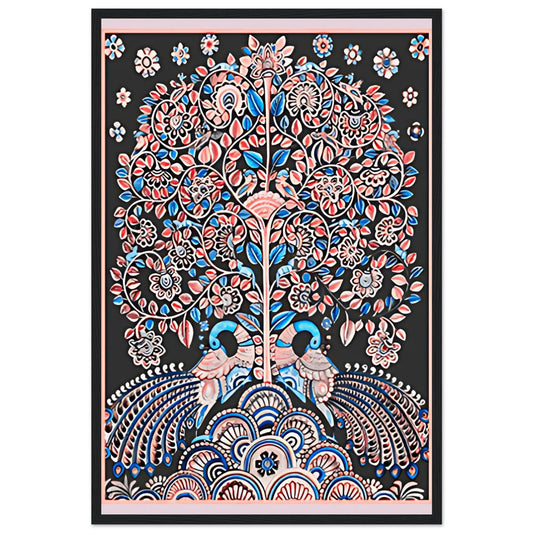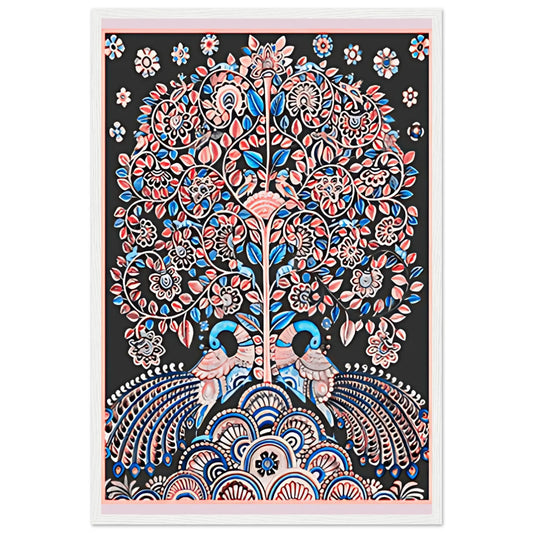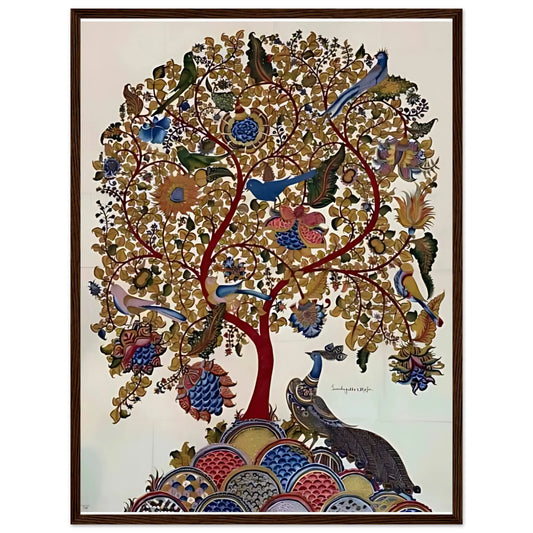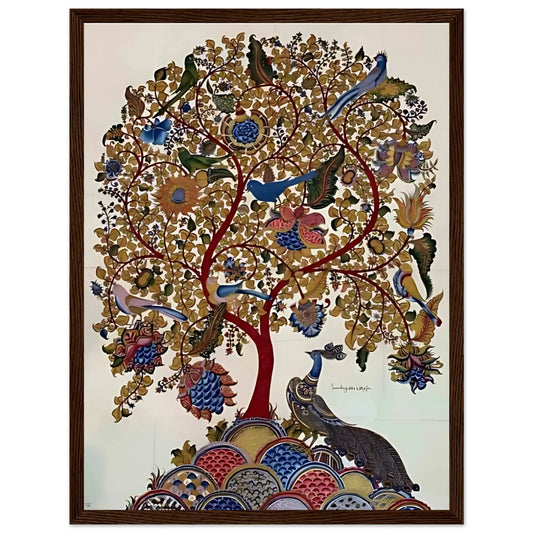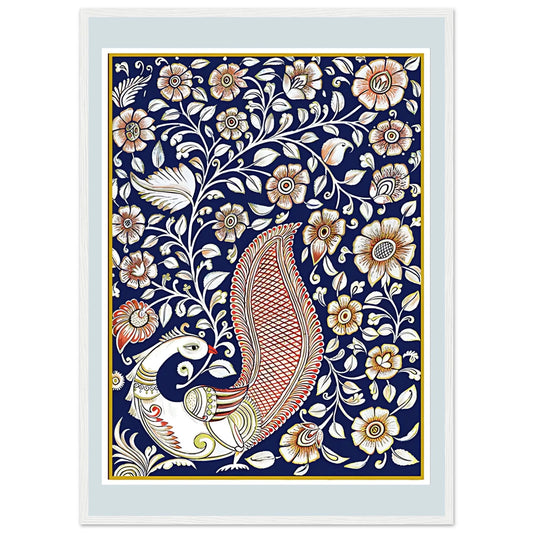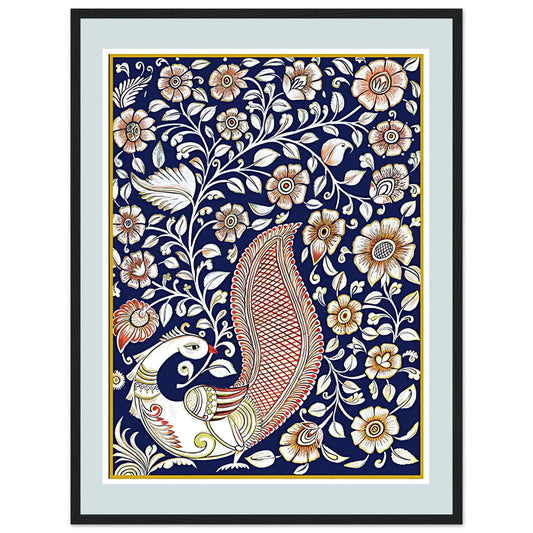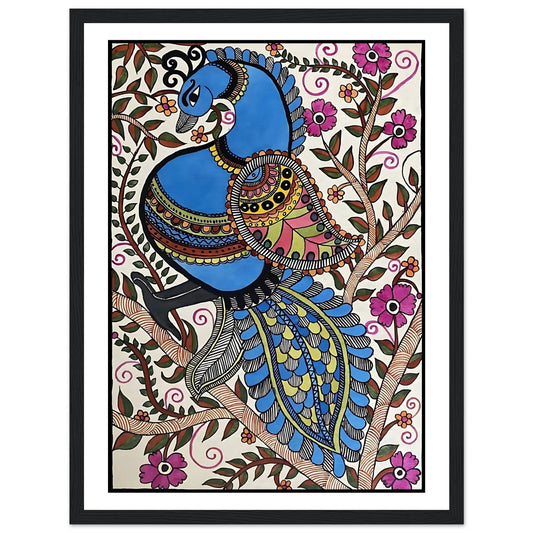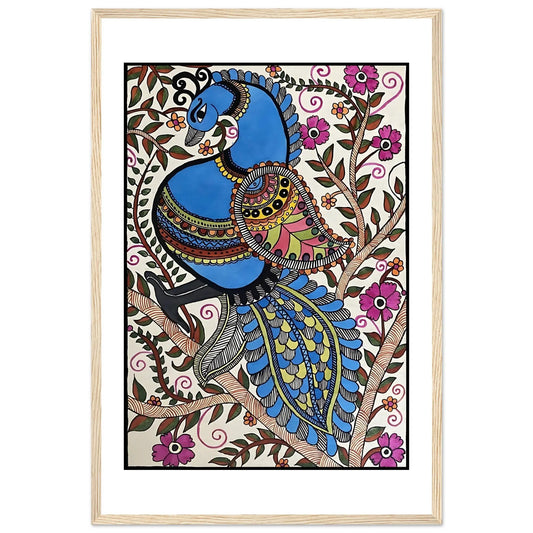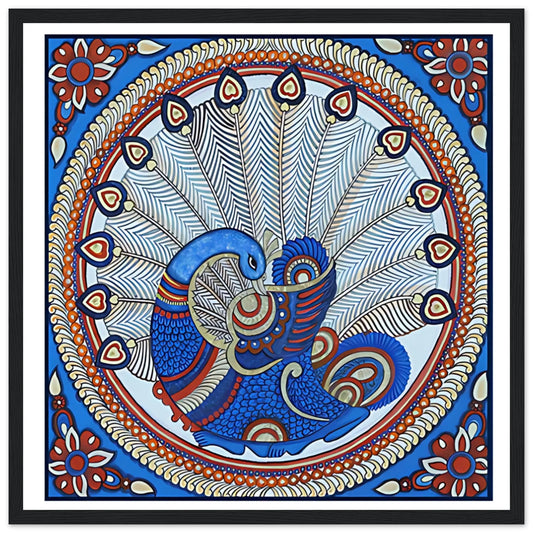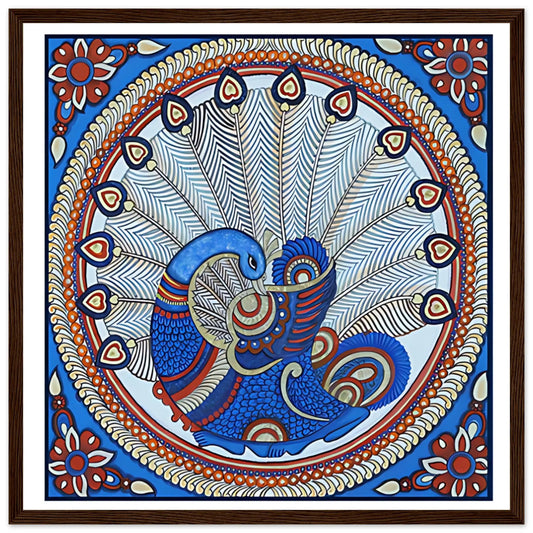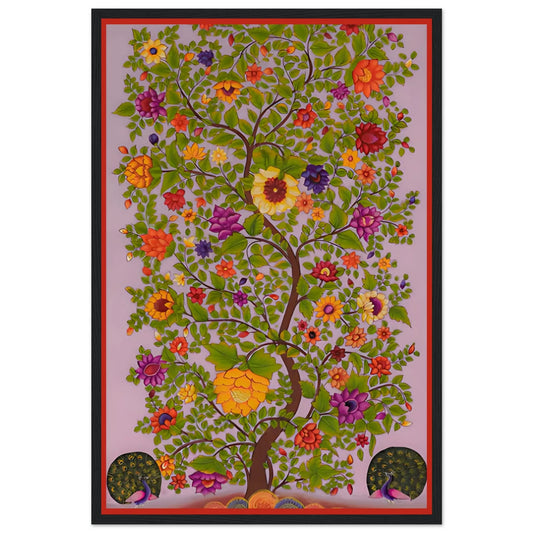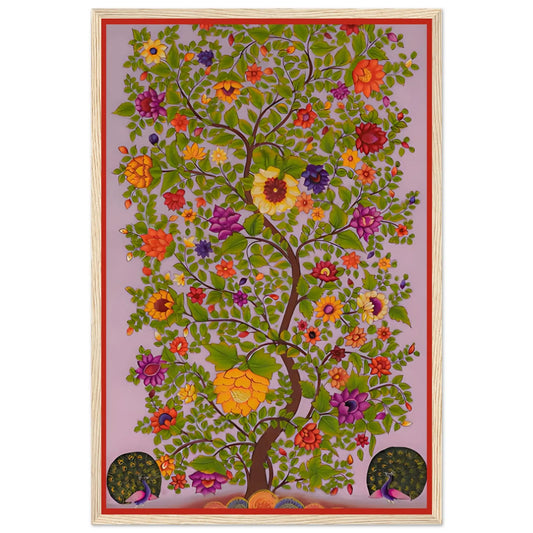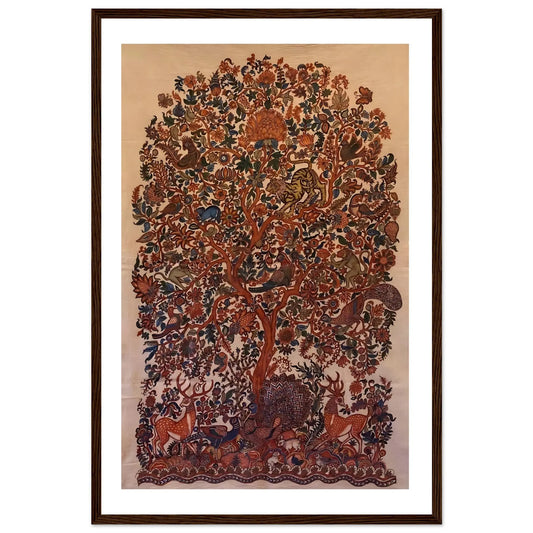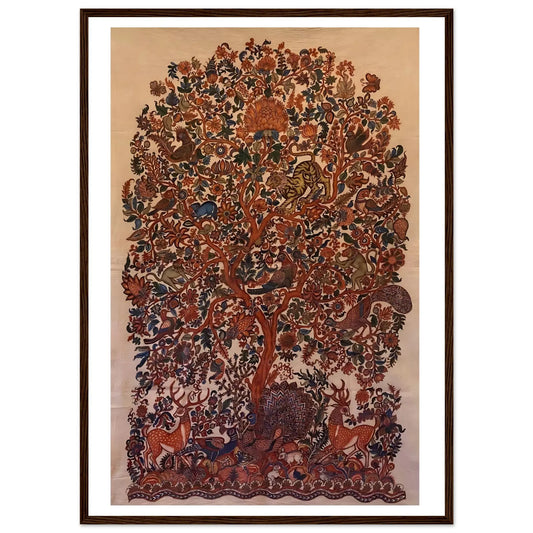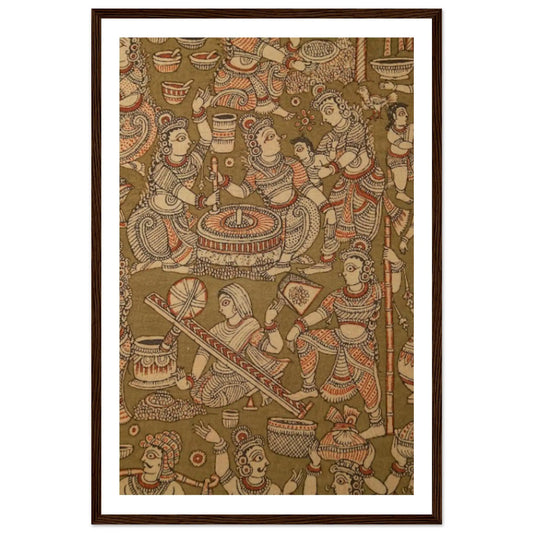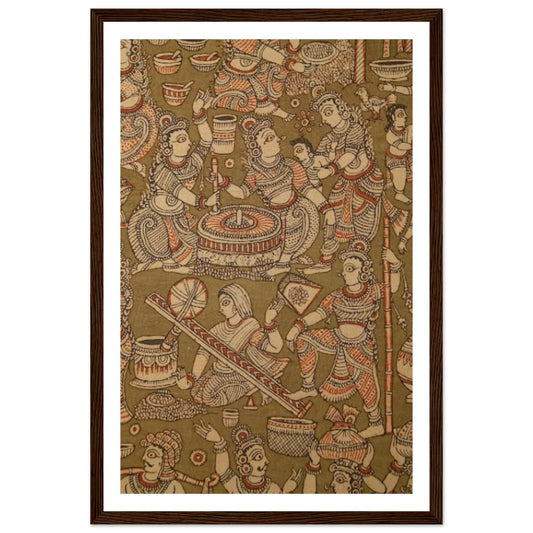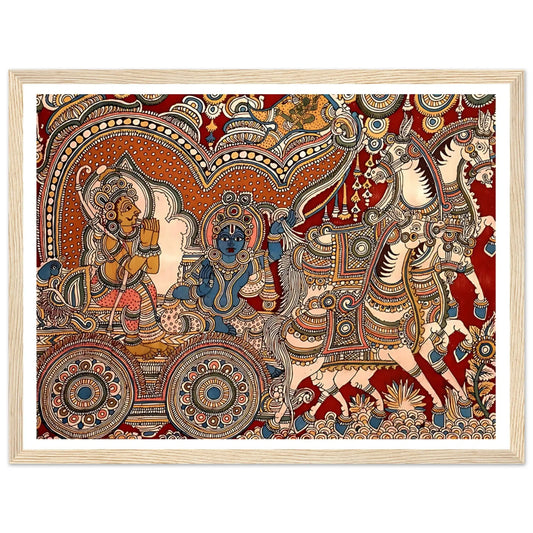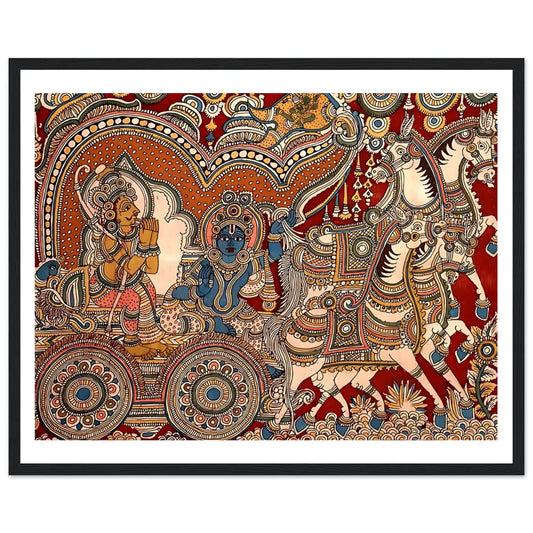Collection: Kalamkari Paintings – Mythical Stories Hand-Painted on Fabric

Kalamkari Paintings
Handcrafted Textile Art from Andhra Pradesh – Mythology in Natural Dyes
Kalamkari Painting is a centuries-old art form from southern India, known for its hand-drawn storytelling and use of organic colors. The word 'Kalamkari' is derived from the Persian words 'kalam' (pen) and 'kari' (craftsmanship), reflecting the delicate, pen-style artistry involved.
This craft has developed into two distinct schools: the Srikalahasti style, featuring freehand depictions of mythological tales, and the Machilipatnam style, which uses carved blocks to create ornamental and nature-inspired patterns.
At Canvas Wiggle, we bring you authentic Kalamkari pieces that reflect the heart of India's artistic legacy.
🪷 Bring timeless stories into your home — shop Kalamkari artworks.
Explore More Folk Art:
History of Kalamkari Painting
Kalamkari Painting originated in the temples of Andhra Pradesh and Telangana, evolving over time into spiritual storytelling through textile. While the Srikalahasti style employs freehand line work to illustrate mythological tales, the Machilipatnam style integrates block printing with floral and geometric motifs.
Traditionally used in temple backdrops, prayer offerings, and storytelling scrolls, Kalamkari remains one of India’s most sustainable and meaningful art forms.
Themes and Symbolism in Kalamkari
Key Themes:
- Mythological Narratives: Scenes from the Ramayana, Mahabharata, and Puranic lore.
- Floral and Fauna Motifs: Peacocks, lotuses, elephants — symbols of divine beauty and nature.
- Devotional Art: Saints, gods, and tales of miracles to inspire spiritual thought.
- Cultural Life: Village festivals, rituals, and customs immortalized in ink.
How Kalamkari Paintings Are Made
The Kalamkari process involves deep craftsmanship, natural materials, and over 20 detailed steps:
- Fabric Preparation: Cotton or silk cloth is soaked, treated with natural mordants, and sun-dried.
- Drawing the Design: Outlines are hand-drawn with bamboo pens using iron-rich black ink.
- Color Filling: Natural dyes made from turmeric, pomegranate, and indigo bring the work to life.
- Fixing and Washing: The piece is boiled to fix the colors and improve durability.
Each artwork is a patient act of devotion — 100% handmade and sustainable.
Kalamkari in Contemporary Homes
Kalamkari pieces blend ancient themes with modern sensibilities. They are used in:
- Wall Art: Bold, storytelling canvases that command attention.
- Textile Décor: Cushion covers, curtains, and runners with earthy charm.
- Framed Narratives: Elegant, bordered compositions ideal for modern interiors.
Whether in a living room or meditation space, Kalamkari art radiates timeless grace.
Why Kalamkari Matters
Kalamkari art bridges faith, folklore, and eco-conscious creativity. By collecting Kalamkari, you support heritage artisans, honor traditional practices, and decorate your space with cultural soul.
Frequently Asked Questions
Is Kalamkari painting eco-friendly?
Yes, it uses plant-based dyes and traditional methods free from synthetic chemicals.
What makes Srikalahasti and Machilipatnam different?
Srikalahasti involves freehand mythological drawing, while Machilipatnam combines block printing and simpler motifs.
Can Kalamkari be used as home décor?
Absolutely! Use them as framed wall art, textile panels, or upholstery to add heritage to your space.
-
Kalamkari: Two Peacocks Dancing
Regular price $181.56 USDRegular priceUnit price / per -
Kalamkari: The 10 Avatars of Vishnu
Regular price From $102.92 USDRegular priceUnit price / per -
Kalamkari: The Tree of Life
Regular price From $103.54 USDRegular priceUnit price / per -
Kalamkari: The Peacock in Blue
Regular price From $182.76 USDRegular priceUnit price / per -
Kalamkari: The Colorful Peacock
Regular price From $103.54 USDRegular priceUnit price / per -
Kalamkari: Peacock spreading its feathers
Regular price From $96.58 USDRegular priceUnit price / per -
Kalamkari: In Pink, Tree of Life
Regular price $181.56 USDRegular priceUnit price / per -
Kalamkari: In Brown, Tree of Life
Regular price From $181.56 USDRegular priceUnit price / per -
Kalamkari: Feast Preparation for a Marriage
Regular price From $104.80 USDRegular priceUnit price / per -
Kalamkari: Arjuna with Krishna on the Battleground
Regular price From $103.54 USDRegular priceUnit price / per

